- View
- History & Places of Interest
- Sightseeing
- Experience
- History & Places of Interest
- Nature/Scenic Spots
-
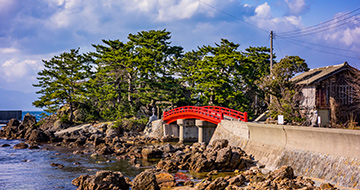 Shrines and Buddhist Temples
Shrines and Buddhist TemplesTsugami Shrine
The Okawa village on the east coast of Sado thrived as a port of merchant shipping during the Edo Period (1603-1867), with shipping agents standing side by side. Tsugami Shrine, a mainstay of this village, houses two well-worshipped deities, a god of safety for vessels on the kitamaebune western shipping route, and a god of good commerce. Tsugami Shrine used to be situated behind the village, and was reputedly relocated to where it now stands sometime before the Genroku era (1688 - 1704). Farther beyond the red Tsugami bridge, the main hall lies and enshrines the sea gods of Sumiyoshi.
Ryotsu area -
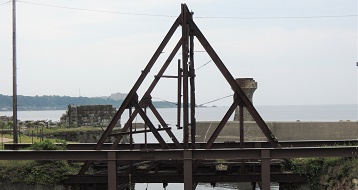 Heritage and Relics
Heritage and RelicsOma Port
Oma Port was constructed in the traditional method of using slaked lime mixed with other materials, a common building technique before concrete became popular, and was completed in 1892. This port was used for loading ore and unloading materials for the mines, such as coal. This heritage site includes the seawall built of masonry, a truss bridge, loader pier and crane support pedestals.
Aikawa area -
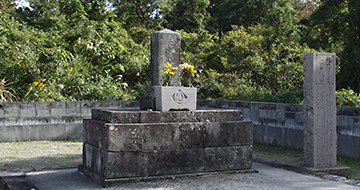 Other
OtherA gravesite of Kita Ikki
Shokoji Temple, close to Kita' birthplace in the Ryotsu Minato area, is a temple for deceased ancestors of the Kita family. His tomb is situated in the Aoyama Cemetary of Shokoji Temple, overlooking the rural landscape of Harakuro (Shiizaki). Although Kita Ikki was a leading thinker and socialist from the Meiji to early Showa times (early 20th century), many people still visit and lay flowers on his grave.
Ryotsu area -
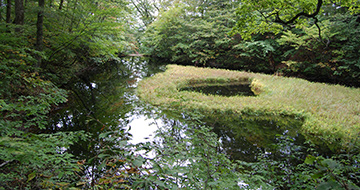 Folklore
FolkloreOtowaike Pond
Take a stroll (about 600 metres) along a trail starting at a signboard on the street around Odaira Highland on Osado Skyline, and you will find the mysterious Otowaike Pond enclosed in woods of beech and Mongolian oak. A natural pond deep in the mountains, Otowaike Pond is an important area (together with the surrounding natural forest), and has been designated a Niigata Prefecture Natural Monument. In the middle of the pond, there is a floating bog, one of the largest of its kind in Japan, with over twenty species of plants, including mosses of Polytrichaceae and Climaciaceae, growing naturally upon it. There is a heart-shaped hole in the middle of the bog, which is considered to be the life-line of the islet, and is also thought to induce romantic ambience. The name of this pond is derived from lore, which says a young woman named Otowa was loved by a gigantic serpent, the master of the pond, and committed suicide by throwing herself into the water.
Kuninaka area -
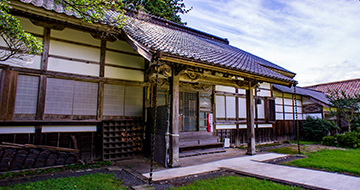 Shrines and Buddhist Temples
Shrines and Buddhist TemplesSesonji Temple
Sesonji Temple houses a lovely green garden on its ancient grounds. Six temple buildings, including the main hall, are designated as Japan's Tangible Cultural Properties. Morikuni Endo, who was a member of Emperor Juntoku's troop and accompanied to Sado along with Emperor Juntoku, encountered Nichiren (founder of Nichiren School of Buddhism, exiled to Sado) and became a fervent follower of him. Sesonji Temple is a meditation hall established with Nikko, a leading disciple of Nichiren, as the head of the temple. The temple houses a mandala drawn by Nichiren Shonin, and also a drawing of Daikokuten (god of wealth) which Nichiren drew at the beach of Shibute (Mano) at the time of his departure from Sado after being pardoned. Mahori Hogan Yoshitaka, a master painter, donated a painting entitled Shibuya Daikokuten. Sesonji Temple is one of the temples on Sado's Seven Gods of Fortune pilgrimage route. Sesonji Temple is also known for its beautiful azalea.
Kuninaka area -
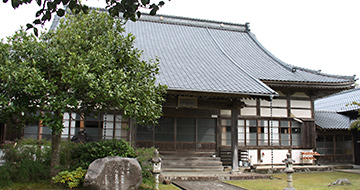 Shrines and Buddhist Temples
Shrines and Buddhist TemplesShohoji Temple
In 1324, Shohoji Temple was established to take care of deceased ancestors of the Honma family, the feudal lord of Izumi Village. This temple is also known as Zeami's place of exile, and there remains his seating stone. The temple's treasure, "Ritual Mask Beshimi" (a mask with a mouth clamped firmly shut), was reputedly made in the late Kamakura Period (around the 13th century), and it is the oldest mask in Niigata Prefecture. It is also said to be the mask that Zeami used for the dance to pray for rain. Hondo (main hall), Kannondo hall, sanmon gate, and so on, are all designated National Tangible Cultural Properties. Shohoji Candlelight Noh Performances are held every June.
Kuninaka area -
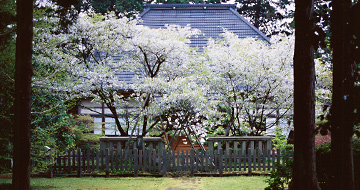 Shrines and Buddhist Temples
Shrines and Buddhist TemplesKaichoji Temple
Kaichoji Temple is an old temple of Soto Zen School located in the middle of the hill leading down to Yajima and Kyojima. The two trees of Goshozakura variety of cherry blossoms in front of the main hall are said to have been planted by Emperor Juntoku himself. Each branch produces a blend of single- and multi-layered white flowers, which are very rare, and the cherry trees at Kaichoji Temple are designated as National Natural Monument. Cherry flowers are in bloom from late April until early May.
Minami Sado area -
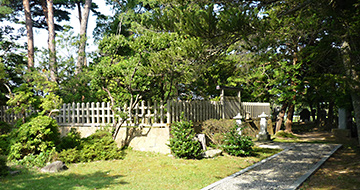 Heritage and Relics
Heritage and RelicsKuroki Palace
Kuroki Palace is the ruins of the residence where Emperor Juntoku lived after being exiled to Sado as an alleged mastermind of the Jokyu Disturbance in 1221. The shabby palace building constructed using rough-hewn timbers was called Kuroki (black wood) Palace. The present-day mound has been maintained since the Meiji Period (1868-1912), after Kenkichi Kawakami, a local, proposed it necessary. The grounds are covered with many pine trees, including one planted by Emperor Showa, and there are also monuments inscribed with poetry by Mokichi Saito and Hiroshi Yosano.
Kuninaka area -
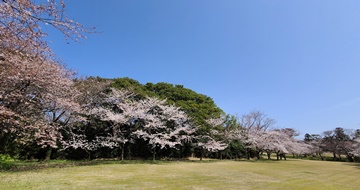 Heritage and Relics
Heritage and RelicsShiroyama Park
Shiroyama Park is located up on a hill facing the sea. After hiking the steep, cobbled path to the top, a large, open green stretches out before you. The park features trail paths, a resting point, a viewpoint and a monument inscribed with a poem written by Koyo Ozaki, a famous novelist and poet closely associated with the area. The park is filled with seasonal flowers: about 3,000 camellia trees come into full bloom from the beginning of February until early April, 500 cherry trees, dwarf azaleas and hydrangea. Shiroyama Park is a popular relaxing place among locals in the Ogi area.
Minami Sado area -
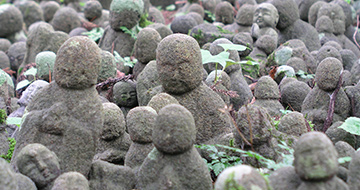 Heritage and Relics
Heritage and RelicsNashinoki Jizo (Statues of the Bodhisattva)
A jizo (stone statues dedicated to local deities) hall is located on the Nashinoki Pass on Prefectural Route 65 (the former Akadomari trunk road), which passes through the Kosado Mountains from Toyota in the Mano area. There is a jizo statue installed to wish for children's convalescence, and small statues of migawari jizo (who takes the place of people) dedicated as tokens of appreciation after prayers have been answered. The number of jizo statues, also called Koboshi (young Buddhist monk), adds up to thousands, and they surround the hall. Jizo Festival is held annually on 24 August. Locals stay overnight there chanting Shingon mantra the night before.
Kuninaka area -
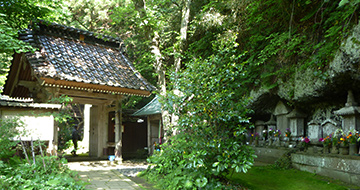 Shrines and Buddhist Temples
Shrines and Buddhist TemplesShokoji Temple
An ancient temple tucked away in the back of the Shukunegi village, Shokoji Temple was founded in 1349 as the first Jishu School temple in Sado. On the Sanmon main gate, there still remains a munefuda [an inscription related to the building], written in 1717, and this gate is one of the oldest pieces of architecture in Shukunegi. Shokoji has been enshrining the Tokai Benzaiten (literally means sea-crossing goddess of the sea), since the olden days. It has continuously been worshipped as a guardian deity protecting against shipwreck, and as a goddess of artistry. A master artist, Mahori Hogan Yoshitaka, donated his painting entitled "Tokai Benzaiten" to the temple. Shokoji Temple is one of the temples on Sado's Seven Gods of Fortune pilgrimage route. Within the temple precinct, there is a graveyard of Shuzo Shibata, a Shukunegi-native who studied Western Studies in the late Edo Period (early 19th century), and later drew an elaborate world map.
Minami Sado area -
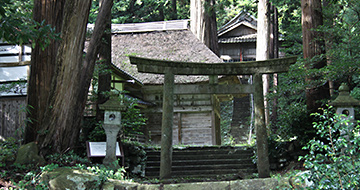 Shrines and Buddhist Temples Noh Stages
Shrines and Buddhist Temples Noh StagesAn'yoji Haguro Shrine
An'yoji's Haguro Shrine is said to be a shrine to where the god divided from Haguro Shrine, in Yamagata Prefecture, was invited and re-enshrined in 772. It is surrounded by gigantic cedar trees, and the main hall lies in harmony with the surrounding lush woods. Since olden days, in the small village of An'yoji, Noh has been offered in place of Ondeko (deity mask dance) in the annual, most important festival. The Noh stage (a Niigata Prefectural Tangible Cultural Asset), with its thatched, hipped-roof, is reputed to have been built in the late Edo Period (19th century). It used to stand across the front path from the main building of the shrine, but around 1909, it was relocated to, and enlarged, on the site where it now lies. The Noh stage at Haguro Shrine is the smallest in Sado, among the ones still in existence.
Kuninaka area -
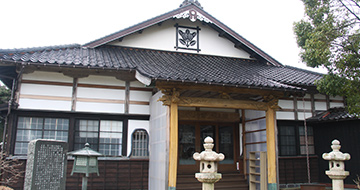 Shrines and Buddhist Temples
Shrines and Buddhist TemplesHongyoji Temple
Matsugasaki is said to be the place where Nichiren Shonin arrived on Sado. Hongyoji Temple was established by Futsujubo Nichiryo (Buddhist monk who was a strong believer of Nichiren) to commemorate the Nichiren's first step on Sado. Within the grounds, you can see the stone statue of preaching Nichiren Shonin, and a large tree of Japanese zelkova (kayak in Japanese) called "Okeyaki", under which Nichiren kept the night dew out after landing on Sado.
Ryotsu area -
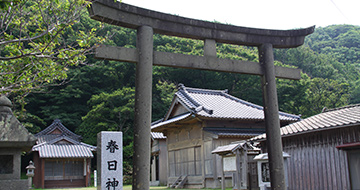 Shrines and Buddhist Temples Noh Stages
Shrines and Buddhist Temples Noh StagesKasuga Shrine
Kasuga Shrine was established in 1605, in the Aikawa Kasugazaki area, by Nagayasu Okubo, a former Noh actor and Deputy for Sado (later the first Commissioner of Sado). It was transferred to where it now stands in 1619. The Noh stage was built in 1645, and a Noh performance was offered in Sado for the first time at the shrine's festival. The present-day stage was conveyed by Suwa Shrine in the Hamochi Takidaira area, and relocated in 2006. This happened thanks to the passion of local residents who took the opportunity to mark the 400th year since Kasuga Shrine's establishment. Various events, including bonfire Noh performances held several times a year, take place in this shrine.
Aikawa area -
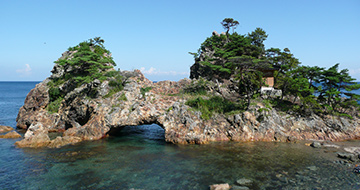 Folklore
FolkloreAkagameiwa Rock
Akagameiwa is a big, red stone of iron quartz, which can be seen from a bathing beach in Akagame Kazashima Nagisa Park. The rock has a hollow in the middle, and the shape resembles to parent and child nestling up together. "Once upon a time, when a fisherman in Suizu encountered a turbulent sea, a big turtle appeared, and the fisherman and his boat rode on the turtle's back and returned to the port. The turtle turned into a rock, and villagers named the rock "Akagame". The rock has this folk story, and there is a shrine to enshrine Akagame Myojin god.
Ryotsu area -
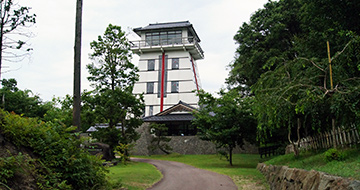 Heritage and Relics
Heritage and RelicsShironoyama Park
Perched on a hill projecting out into the port, the ruins of the castle built by a castle lord in the late 16th century have been converted into a park for the public. The observation tower serves as an exhibition hall for Akadomari's many folk tales, and bronze sculptures depicting scenes from the stories are on display on each floor. Enjoy a panoramic view in 360 degrees: from the lush mountains behind to Akadomari Port right down the hill, and the Echigo mountain range across the sea.
Minami Sado area -
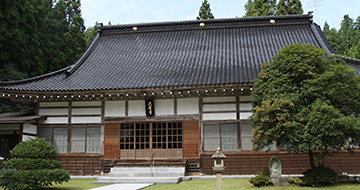 Shrines and Buddhist Temples
Shrines and Buddhist TemplesDairenji Temple
Dairenji Temple is a temple of the Soto Zen school of Buddhism established in 1421 as a temple to take care of ancestors of the Honma clan, Lords of Hamochi Castle. The sanmon main gate is the east gate of the castle (Niigata Prefecture's Historic Site), which survived destruction in a siege by Kagekatsu Uesugi (lord of Echigo), and was later relocated. This temple served as accommodations for successive Deputies for Sado and officials in the Edo Period (1603-1867). Within the precinct, there are the 500 Arhats Hall, created by a sculptor of Buddha statues in the Edo Period; Kannondo Hall, enshrining a secret Buddhist icon, Maria-Kannon (Mary statue in Kannon disguise); and Hotei (god of good fortune) Hall worshipped for wealth and happiness. Mahori Hogan Yoshitaka, a master painter, donated his painting, entitled "Amazawa Hoteison." Dairenji Temple is one of the temples on Sado's Seven Gods of Fortune pilgrimage route. Referred to as a temple of camellia flowers, Dairenji Temple is familiar to locals,
Minami Sado area -
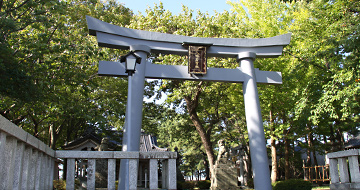 Shrines and Buddhist Temples
Shrines and Buddhist TemplesHachiman Wakamiya Shrine
Called "Wakamiya-san", Hachiman Wakamiya Shrine is familiar to locals in the Ryotsu Minato area. Every year on the 5th of May, Minato Matsuri, the most important annual festival at the shrine, takes place. Along Wakamiya Street, fisherman's good-haul banners (used to indicate a good catch) are hoisted and flutter, and a mikoshi (portable shrine) is carried, bounced and shaken through the street in a wild procession. It is a distinctly heated, port-town festival. Within the grounds of the shrine, along with the Main Hall, there is a hall enshrining Tenmanten Shrine, Izumo Taisha Grand Shrine and Otokai Shrine together, and a monument built in memory of the Kita brothers, Ikki and Reikichi.
Ryotsu area -
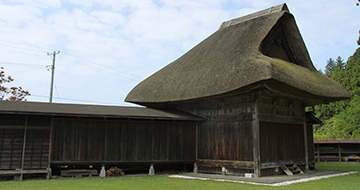 Shrines and Buddhist Temples Noh Stages
Shrines and Buddhist Temples Noh StagesKusakari Shrine
Impressive stone light towers stand along the front path leading to the worship hall. Kusakari Shrine was called "Hachioji Gozutenno" around the middle of the Edo Period (early 19th century), and worshipped as a god of agriculture. It was later called Gion Hamochi Shrine for a time, and then renamed after the old name of the village "Kusakari no Sato," in 1870. Kusakari Shrine is known for offerings of bonfire Noh performances, and a kind of kagura (dance and music dedicated to gods) called "Onimai Tsuburosashi," (designated a Niigata Prefecture Intangible Folk Cultural Asset) performed at Hamochi Festival held annually on the 15th of June. The Noh stage (also one of Niigata Prefecture's Designated Tangible Folk Cultural Assets), which is considered to have been built before the Meiji Period, has a hip-and-gable thatched roof in front and a hipped roof at the back. The structure blends well with the idyllic landscape, whilst projecting a stately ambience.
Minami Sado area -
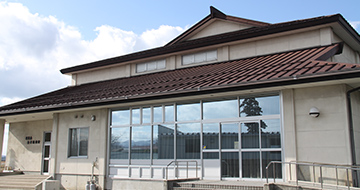 Noh Stages
Noh StagesHori Kinen Kanai Nohgakudo
Kanai Nohgakudo is a Noh theatre located in the Kanai area, which is known as Zeami's place of exile. The theatre hosts a variety of events, including Noh performances, throughout the year. The indoor stage is arranged with seating areas set up on three sides. It consists of a 6-meter mainstage constructed from Japanese cypress, an approximately 10-meter long hashigakari (ridgeway), and a kagami-ita (back wall) with a painting of a pine tree. Kanai Nohgakudo was built on the former site of the residence of Mr Jibu Hori and his wife, who were honourary citizens of the former Kanai Town. A statue commemorating their contribution to their hometown stands within the grounds.
Kuninaka area -
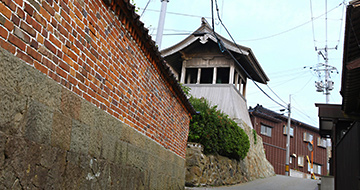 Heritage and Relics
Heritage and RelicsTime Bell Tower
Time signal in Aikawa Town started in 1709, by striking taiko drums set within the Sado Commissioner's Office. The first "time bell" was cast with Sado-produced bronze in 1712, under the ordinance of Shigehide Ogiwara, a Sado Commissioner. The time bell rang out to let people know the time until around 1871, but it then went silent. The bell recently began striking again, in the morning and evening. The brick wall is part of a former court building, and the inside serves as the Sado Hangamura (print art) Museum.
Aikawa area -
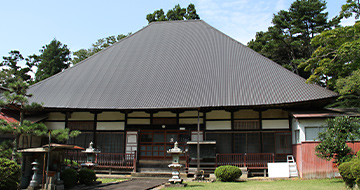 Shrines and Buddhist Temples
Shrines and Buddhist TemplesJinguji Temple
The bronze bell owned by Jinguji Temple is designated as a National Important Cultural Property. The bell was originally offered to Shokoji Temple (Hayoshi, Sado) at the end of the Kamakura Period, to wish Nobutoki Hojo (governor of Sado) peace and good luck in the war. According to the inscription carved on the bell, it was cast and dedicated in 1295. When Haguro Shrine was abolished in 1868 on the order of the separation of Shintoism and Buddhism, the followers of Jinguji Temple purchased the bell and dedicated it to Jinguji Temple. The graceful appearance is marvellous.
Kuninaka area -
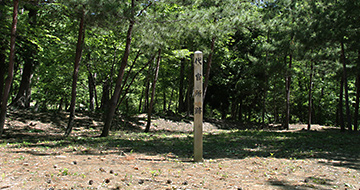 Heritage and Relics
Heritage and RelicsTsurushi Ginzan Silver Mine
Tsurushi Ginzan is an old site of the largest silver mine in Sado deep in the mountains in the Sawane Ikari area. It is considered that the silver mine was discovered by a merchant from Echigo (present-day Niigata Prefecture) in 1542. After that, mining engineers were invited from Iwami Ginzan Silver Mine in Shimane Prefecture to develop the mine. The mine features remains of over 600 pits and mine shafts. The Sawane area down the mine flourished as a port town to ship silver. The skills and experiences gained through the mining activities at Tsurushi Ginzan, were later passed to the development and operations of the Aikawa silver and gold mines on the other side of the mountain.
Aikawa area、Kuninaka area -
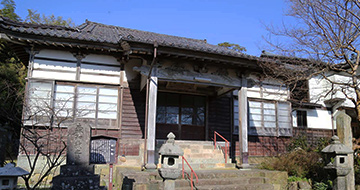 Shrines and Buddhist Temples
Shrines and Buddhist TemplesDaianji Temple
Daianji was established in 1606 by Nagayasu Okubo, the first Commissioner of Sado. A long, beautifully cobbled path leads up to the Sanmon gate, and the main hall features the temple crest of three leaves of hollyhock in a circle. The temple houses a memorial tower built by Nagayasu Okubo prior to his death, and a memorial tower for Hikozaemon Kawamura who was involved in the early-stage development of the Sado gold and silver mines. Both towers are National Historic Sites. This temple also holds the burial grounds for officials who served the Sado Commissioner's Office. A spectacular Machilus thunbergii (bay tree) grove, a Sado Natural Monument, stands behind the graveyard. Drastic urbanization due to the development of the mines significantly changed the landscape of the Aikawa area. Still, groves within the grounds of temples and shrines retain their native vegetation. Many plants such as the giant Machilus thunbergii, camellia and Euonymus japonicus (Japanese spindle) grow in the dense natural woodland of Daianji Temple.
Aikawa area -
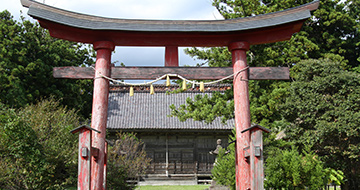 Shrines and Buddhist Temples Noh Stages
Shrines and Buddhist Temples Noh StagesNikuu Shrine
The site where Nikuu Shrine stands used to be a temporary residence, built by the Kamakura Shogunate at the birth of the second daughter of Emperor Juntoku, Imperial Princess Chushi. In honor of the wild irises ("shobu," in Japanese) in full bloom, Emperor Juntoku named the residence Shobuden (literally: iris residence). Dedicated to Princess Chushi, who passed away at the age of eighteen, the shrine buildings were constructed as Nikuu Daimyojin (a shrine) during Emperor Gofukakusa's reign (mid-13th century). Both Shobuden, which enshrines the hair of Princess Chushi, and the graveyard, under management of the Imperial Household Agency, stand within the grounds. There is a Noh stage, too, which has a thatched, hipped roof and is situated, with woods at its back, to the southeast of the main building.
Kuninaka area -
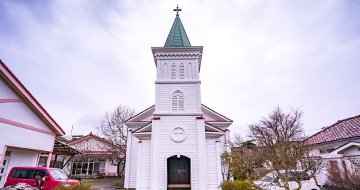 Other
OtherRyotsu Catholic Church
Christianity is considered to have been brought to Sado first in the Edo Period (1603-1867). Ryotsu Catholic Church was founded by a French Christian missionary, Fr. Drouart De Lezey. It was burnt down once in 1883, but was reconstructed by a missionary, De Noailles, in 1887. The church building was designed by Father Papino, who designed many churches in Japan.
Ryotsu area -
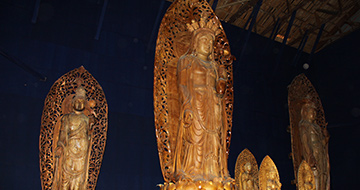 Other
OtherSado Daikannon Showaden
A group of Buddha statues, numbering over 220, is installed in one corner of the Nakaoku area. The main image of Buddha is the Eleven-Headed Kannon Bosatsu a.k.a. Sado Daikannon (Ekadaśamukha), which was erected in 1970, and initiated by Ryukai Yamaguchi, the 24th generation of head priests at Ishina Seisuiji Temple. This huge statue, more than seven metres tall, is made from the single trunk of a Japanese cypress tree over 2,200 years old. It is said that this is the world's largest wooden Buddha statue.
Kuninaka area -
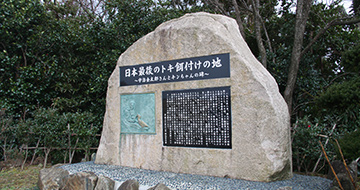 Other
OtherThe feeding site for the last wild Toki, Japanese Crested Ibis, in Japan
A wild bird flied down in Nishimikawa in 1967. Mr Kintaro Uji, Toki observer, carefully observed and kept calling out to the bird, and eventually, succeeded in feeding it. The Toki, later taken into protective care, was named Kin after Mr Kintaro Uji, and ended its life of thirty-six years at Sado Toki Conservation Center. The monument was built in memory of Mr Uji, who successfully fed wild Toki, and Kin, the last wild Toki.
Kuninaka area -
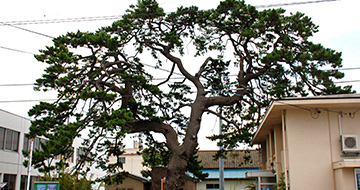 Heritage and Relics
Heritage and RelicsMurasame no Matsu (rain-showered pine)
Within the grounds of Sado Japan Coast Guard Station, a Japanese black pine tree with beautifully shaped branches stands nineteen metres tall, and has a girth of six metres. It used to be a navigational aid for maritime pilots at sea, and is mentioned in the folk song, "Ryotsu Jinku". Murasame no Matsu used to be called "Otabisho no Matsu" (a pine tree at the midway resting point of a god during a procession), or "Gobansho no Matsu" (a pine tree at a port observation post). Koyo Ozaki, a novelist who visited Sado in the Meiji times (1868-1912), thought the tree getting splashed by waves resembled the wetness of getting caught in a shower of rain (called "murasame" in Japanese). The tree's name is derived from this episode. Murasame no Matsu is a Niigata Prefecture Natural Monument.
Ryotsu area -
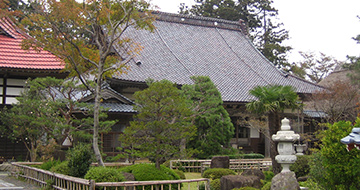 Shrines and Buddhist Temples
Shrines and Buddhist TemplesJissoji Temple
It is said that Nichiren Shonin, founder of Nichiren School of Buddhism exiled to Sado, stood and chanted mantra on this hill every morning, after forced to live in Ichinosawa. The precinct is scattered with a bronze statue of Nichiren, praying to the rising sun whilst thinking of his parents at home in Awa (present-day Chiba Prefecture), Kesagake no Matsu (a pine tree which he hang his monastic robe on), a spring with which he rinsed his hands, and so on. Also, "Sanko no Sugi", a gigantic cedar tree over 1,000 years old (Sado City's Designated Natural Monument) stretches its branches.
Kuninaka area